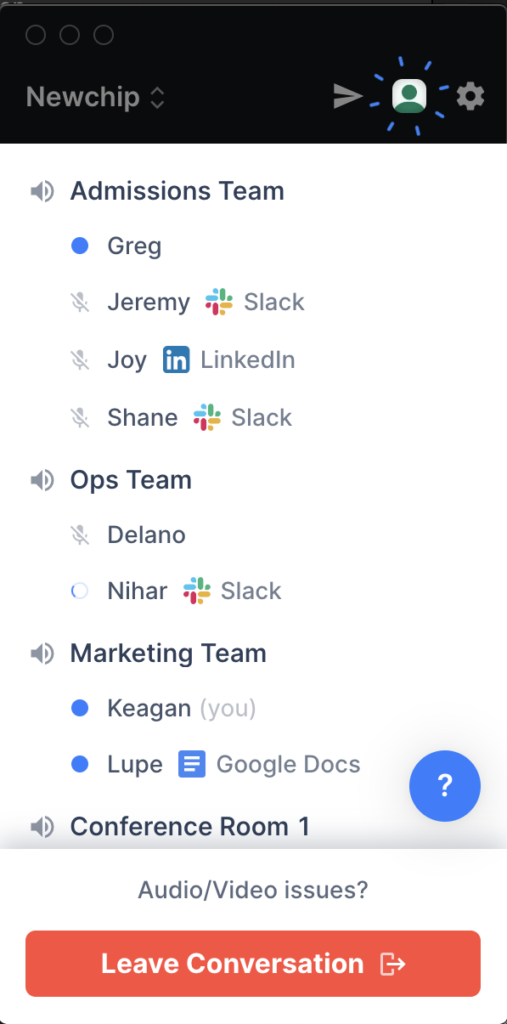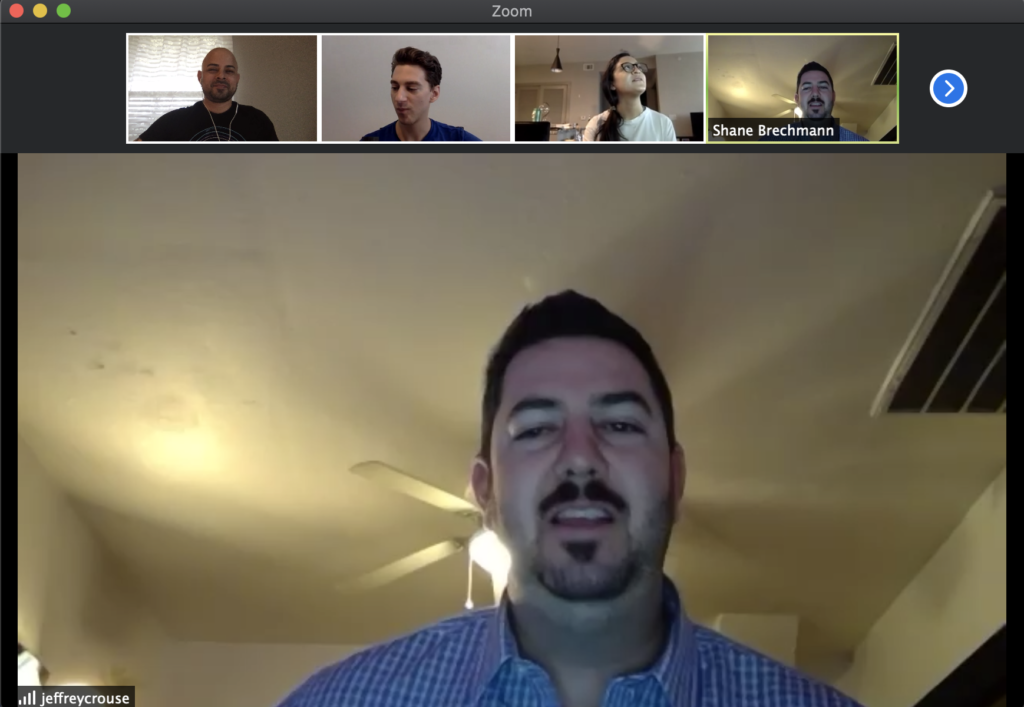ARMANDO VERA CARVAJAL
 Verified Writer
Verified Writer
ARMANDO VERA CARVAJAL
 Verified Writer
Verified Writer
ARMANDO VERA CARVAJAL
 Verified Writer
Verified Writer

PAULKLEEN
 Verified Writer
Verified Writer
ARMANDO VERA CARVAJAL
 Verified Writer
Verified Writer
ARMANDO VERA CARVAJAL
 Verified Writer
Verified Writer
 07 July, 2021
07 July, 2021
If you’re a founder, this may not be the case (we thrive in chaos), but employees all over the world are reporting lower happiness, high levels of anxiety, isolation, and feelings of depression. They feel disconnected, not just from their personal lives, but also from their coworkers and teams that they rely on to meet their daily social needs (whether they admit to it or not). And while all of our inboxes now have hundreds of emails on how to move teams remotely from a technical standpoint, I found there to be a severe lack of information on how to lead and keep a remote team feeling connected, motivated, and productive during this pandemic. Even if you’re used to managing a remote team or contractors, (or even if your entire full-time team is already remote), what’s different today is we’re all seeing companies of all sizes make massive layoffs. It’s disheartening to read the news, because everything is focused on keeping us in a constant state of anxiety. On top of that, people can’t even leave their homes. They’re discouraged from visiting any older family and being around friends.
We all miss seeing each other at the office, but we’re making the most out of the situation, and our team is crushing it. In fact—we’re actually twice as productive now, and we’re getting a lot of things done. How did we do that? I can guarantee it wasn’t from reading the copy and paste drivel about remote teams in our inboxes. First, I need to give you some context. Being a remote accelerator, we’re used to working with all of our portfolio companies and mentors remotely, and for years we’ve been split between multiple offices with half our team working remotely. This made the transition easier for us than it was for most companies. We had already known how to handle this from an operational and accountability standpoint, so all we had to do was identify risk and make tweaks to ensure we were giving enough attention to the people factor, and communicating more efficiently. Because we’ve had success, I whipped up this post to share what’s worked for us to keep our team motivated, sane, and productive during the COVID-19 panic.
Here’s what you should be able to do after this:
The first thing I did when we decided to move the entire team remote was supercharge our Slack workspace over the first weekend. I spent my Saturday night working with our CEO, Ryan, to install these apps on our workspace and run some field tests: Here’s what we did:

resources: Document Collaboration: Quip & Google Drive Design Collaboration: Figma Project/Task Management: Trello, Asana & Basecamp
Having a remote team is a double-edged sword. On one hand, people have actually been found to work longer more productively when they’re remote. (People are finally responding to my 11:00 pm Slacks!) On the other hand, keeping your team aligned to the goals of your company becomes much harder and it’s more difficult to see when people are drifting. Because of this, it becomes vitally important for you to set KPIs and keep your team accountable to them. This is your look into the black box of your team’s workdays. You should already be keeping everyone you employ accountable to certain KPIs, but if you aren’t, then now is a perfect time to start. Here’s what you should keep in mind when setting KPIs: Measure output and results, not work. Are the KPIs you are setting actually the ones that you should be measuring? Make sure the KPIs you keep people accountable to are encouraging your employees to drive the results you want, rather than filling up their workday. If I had to choose between an employee working 3 hours a day to bring me $100,000 in monthly revenue vs. working 10 hours a day to bring me $75,000, I’d pick the 3-hour scenario any day, and I hope you would too. Make sure whatever you’re keeping your team accountable to is bringing your company value rather than filling work. Make sure the KPIs you’re setting are in line with the goals of the entire company. I used to run a marketing agency. One time, while working for a client, I subbed part of my engagement out to another agency that I trusted. I used them to drive lead volume but made the amateur mistake of not setting qualifiers for the leads. Rather than measuring “qualified” leads, I paid the other agency on all leads, and I ended up paying thousands of dollars for them to send my client leads that didn’t convert which wasted their sales team’s time. This can easily happen with your own team as well. When you can, make sure you’re not only measuring volume but quality. Daily standups. Every morning at Newchip, I start my team’s day with a daily standup to make sure they’re delivering on their work and our plans for the day are aligned. Standups are brief 15-minute meetings for agile teams where teams share what they’ve done the previous day, any blockers, and what they’re working on today. Limit these standups to 5-6 people total, any more is too much. Do not use these meetings to solve problems. Use them to discover problems and then schedule a time to solve them. I directly manage 5 people, so I start my day at 9:00 am with a 15-minute standup, before going into a 9:30 am standup with the other leaders within the business. During my first standup, I make sure my entire team answers these questions: Yesterday: What did you accomplish yesterday? Did you accomplish what you said you would? Why or why not? Today: What’s everyone’s top priority today? What are you going to accomplish? Sync: When will everyone have downtime/availability? Obstacles: Any obstacles, blockers, need anything from anyone else or another department? For the people I manage who have others reporting to them, I make sure they provide updates on behalf of their lieutenants. When I go into my 9:30 with the CEO and other executives, I answer the questions above on behalf of my team. With my team, I make sure that they start at 9:00 am on the dot. If they’re not on time, you bet I call them out. The start of your day sets the tone for the rest of the day, don’t start it by being late.

Now that I’ve gone over how to make sure you’re well equipped to keep your team productive and sane, how do you keep everyone feeling that they’re part of a team, make sure their morale is up, and make sure they’re not feeling isolated during the pandemic? This element is possibly the most important aspect of this guide. If your team doesn’t stay motivated, they will not produce, and if they begin to feel too isolated they will not stay motivated for long. As a founder or leader, one of your biggest responsibilities as a manager is to handle the “people factor” during the COVID-19 pandemic. This is also your opportunity to shine and show your team how much you care and make them proud to work for a company that’s looking after their own and making them feel connected in a time when millions are feeling isolated. Here’s what we’re doing to keep the team sane & motivated: Required video calls with defined work stations: We require video during all of our stand-ups. This means that people must clean-up, and make themselves presentable, so they’re not rolling out of bed before they start every morning. A face is put to the voice. Also, unless it’s literally the only room in their house, I don’t want to see a bed in the background. We ask our team to set up defined work-stations to help them separate “work” and “home” in their minds as much as they can. (Sleep experts also agree that it’s unhealthy to work in your bedroom and can contribute to insomnia). Both requiring video chat and defined work stations go a long way in making people get into the right mindset for work and is the closest thing we can do to emulate seeing everyone at the office. Virtual happy hours (my personal favorite): When you’re in the office, there are natural gaps that happen throughout the day where people find time to make small talk or just shoot the shit. This is hard when you’re working remotely, most people only block off time for meetings to get stuff done–you lose a lot of the social aspect. A virtual office like Tandem can help, (we have a watercooler room for people to take breaks and chat up), but while your team is working remotely, it’s important to also block off some time for team-building: Bars are closed throughout the country, events are canceled, and no one (sane) is hosting parties. You’ve probably already been putting off that team outing you’ve promised you’d do, so it’s time to deliver on that promise. At Newchip, we’re hosting team-wide and company-wide happy hours every week. (Also a plus: it’s cheaper than taking your team out for drinks.)

Today, a founder confided in me that he didn’t understand why his team seemed so anxious even though their business served to gain from the pandemic. As founders and managers, we’re often so focused on our business that everything else seems like background noise. This founder in particular simply saw the event as a market trend that would cause his business (and in his eyes, the people on his team) to only gain. To him, it didn’t even seem to register that for most people, the pandemic brings in a substantial amount of uncertainty. The average person is worried about food shortages, that our society will collapse, or that the coronavirus will tear the sky asunder and end space and time. While looking at how this has played out in other countries, we highly doubt that’s the case, unlike the founder most people don’t look at COVID-19 as primarily a force in the market. The “people factor” can sometimes be the hardest thing to get right, yet is always the most important. Today, the challenges are compounded due to the uncertainty and anxiety the coronavirus brings the majority of workers. I hope this post has helped guide you a little bit more towards getting the people factor right despite all the challenges ahead. Leave a comment to share with us and others what has worked for you and your team. Stay safe & healthy. Stay indoors if you can to help flatten the curve. Crush it, you’ve got this.
Topics: Announcements
